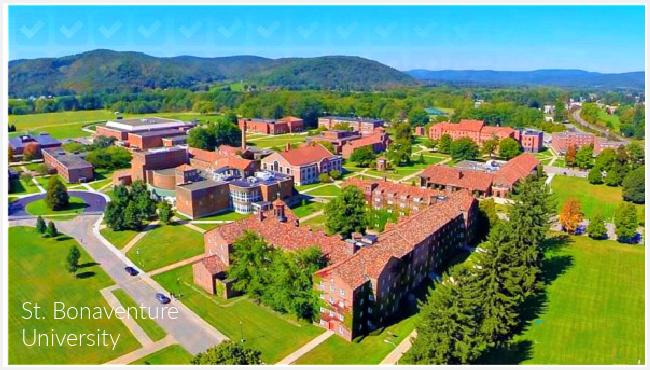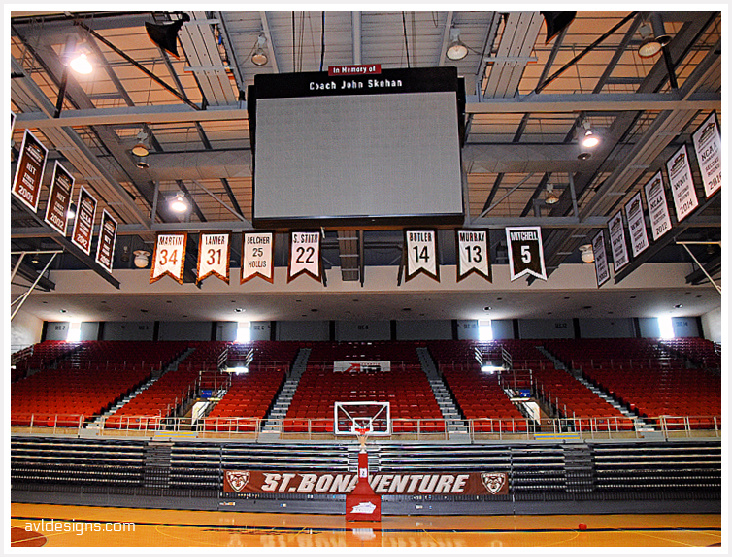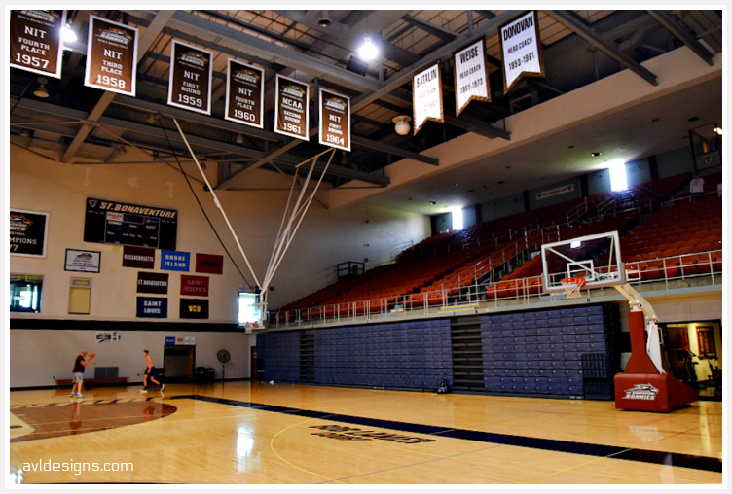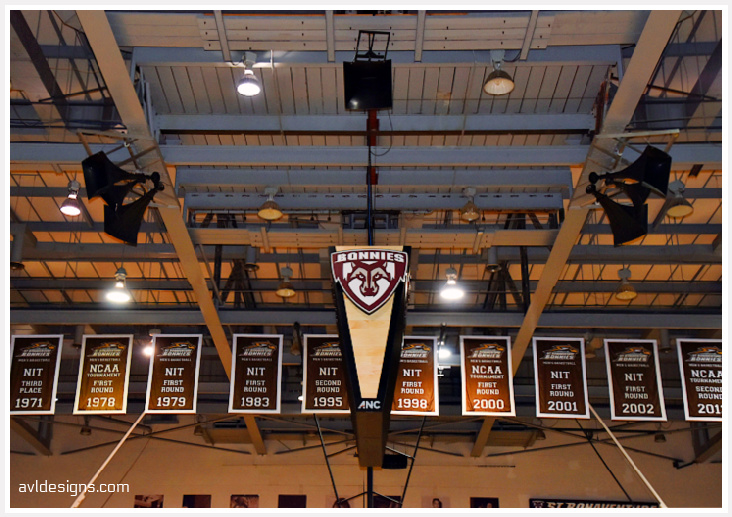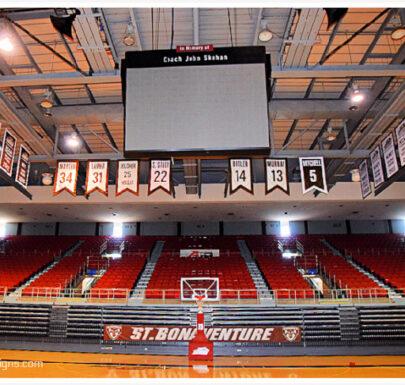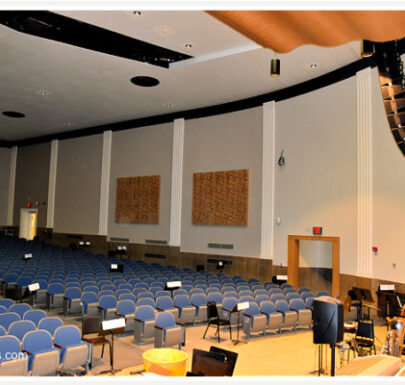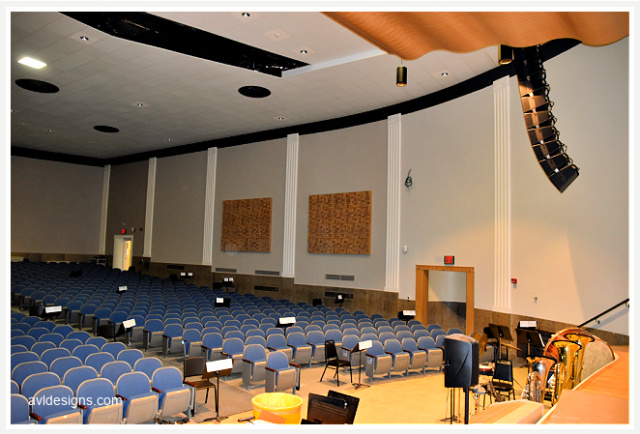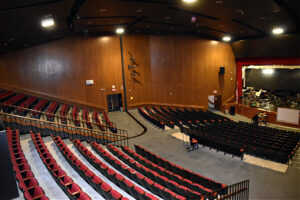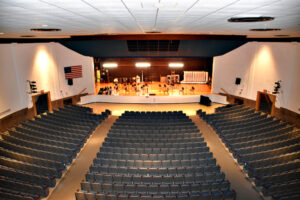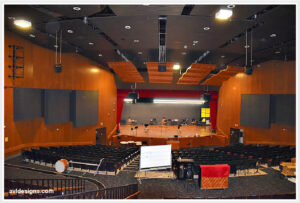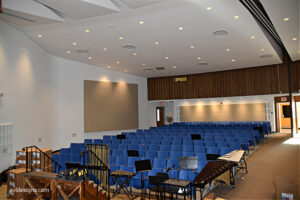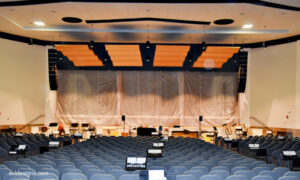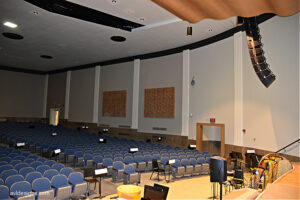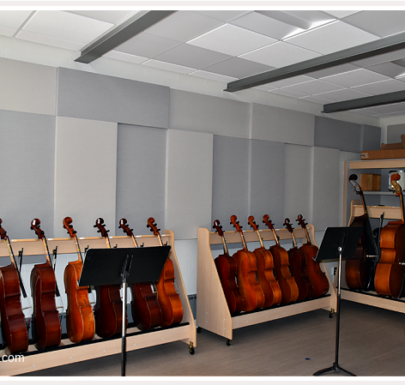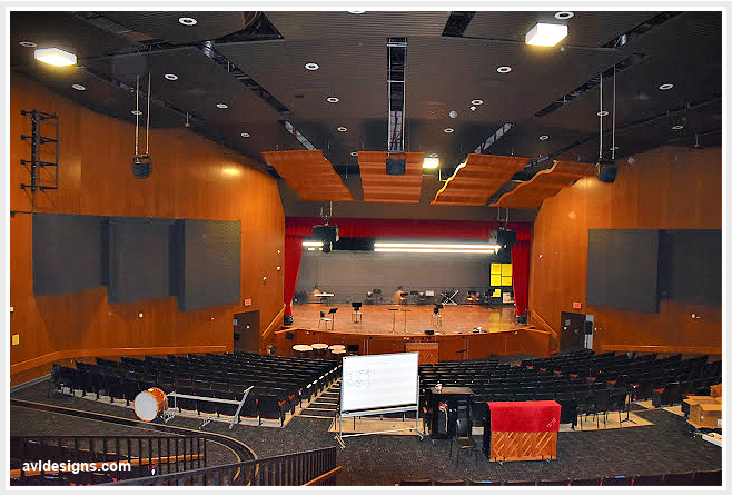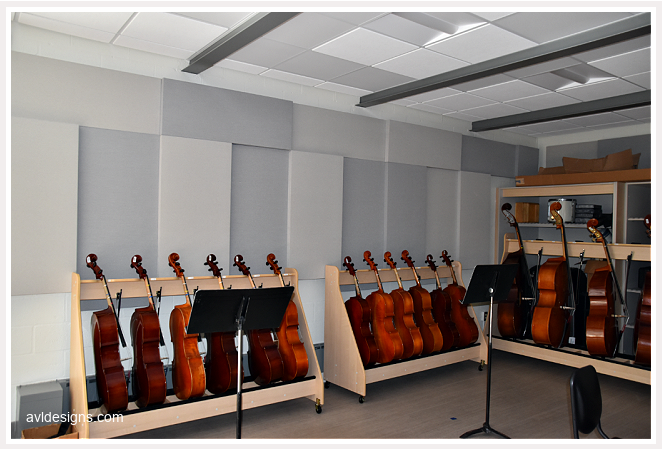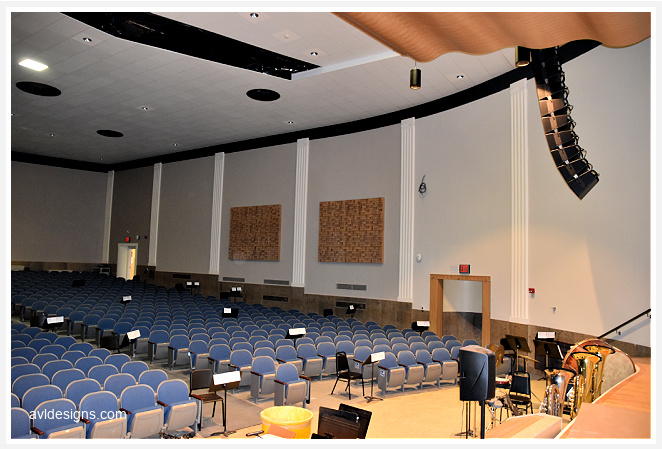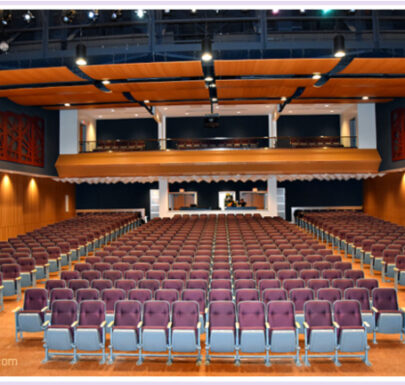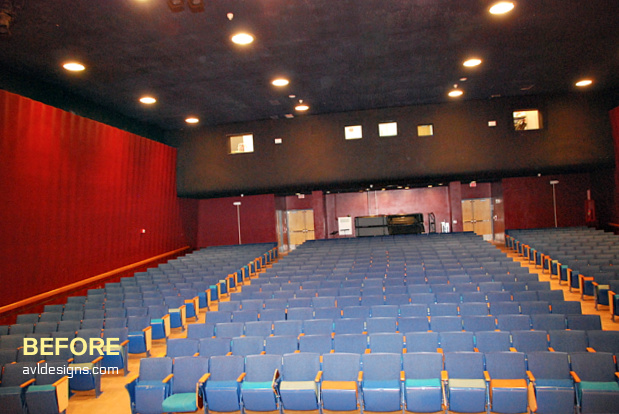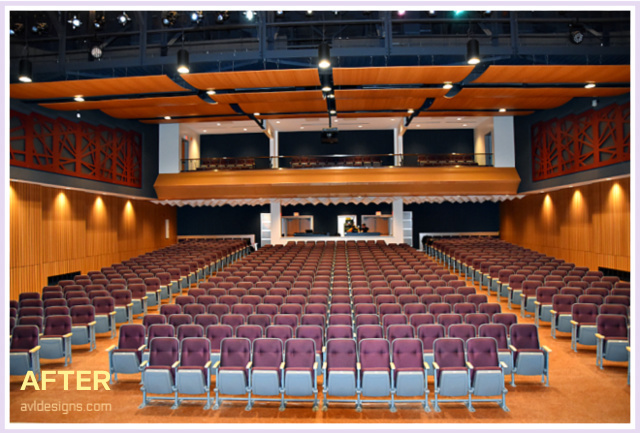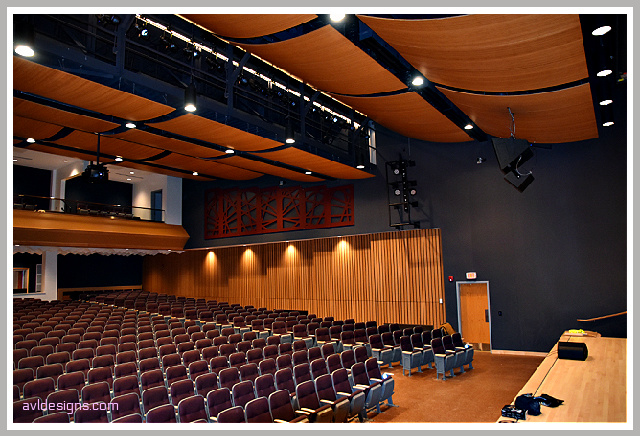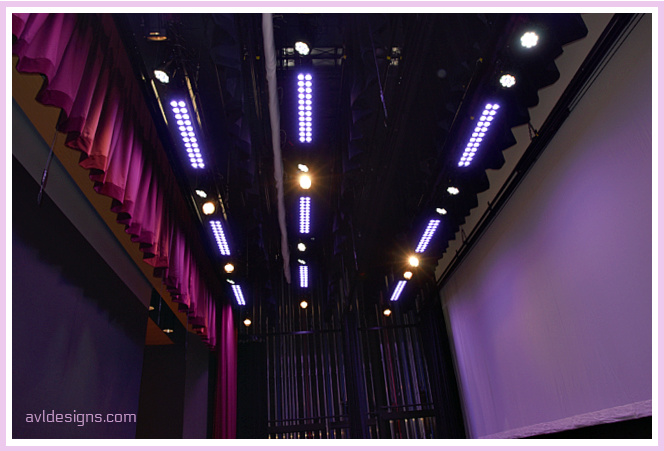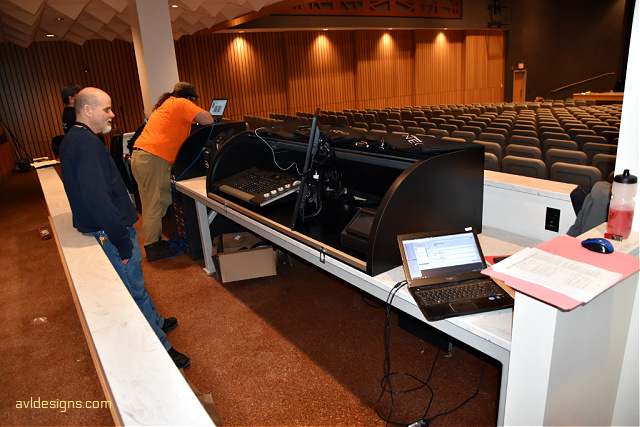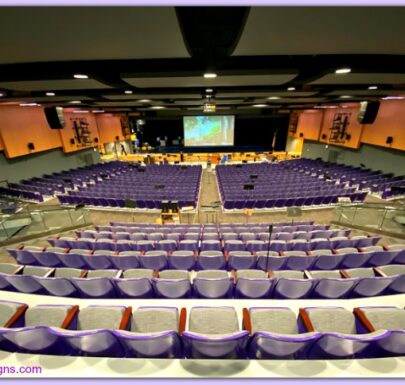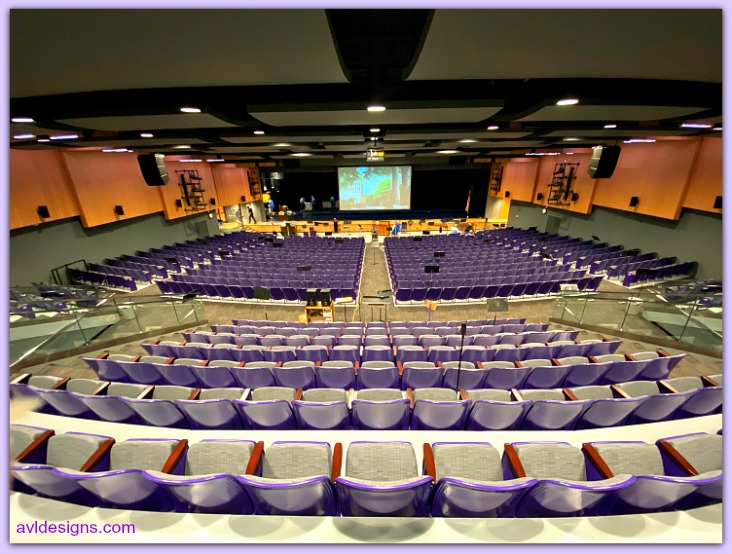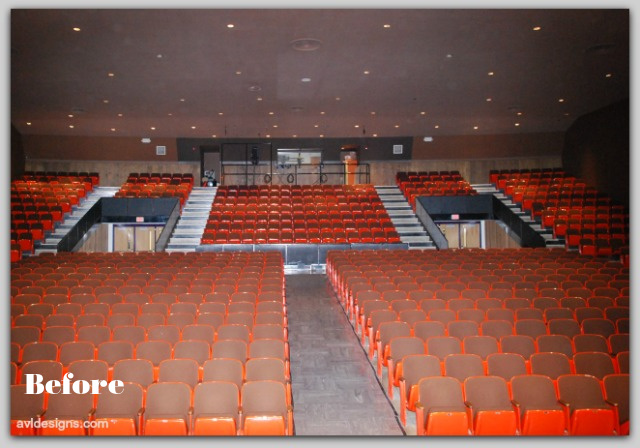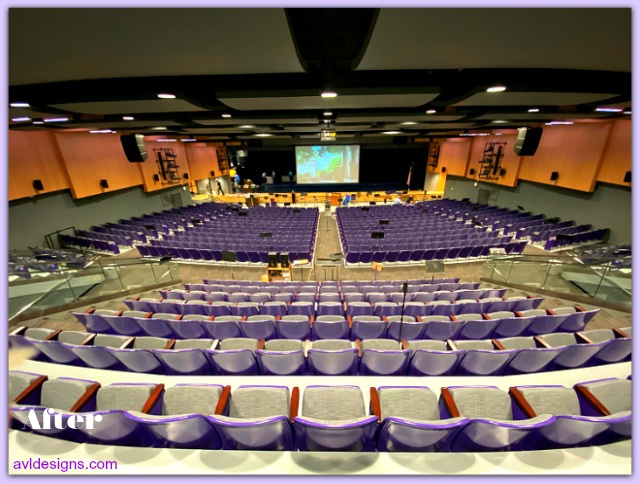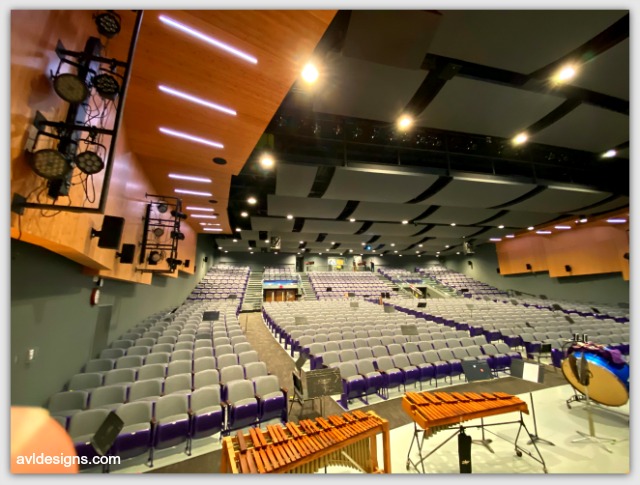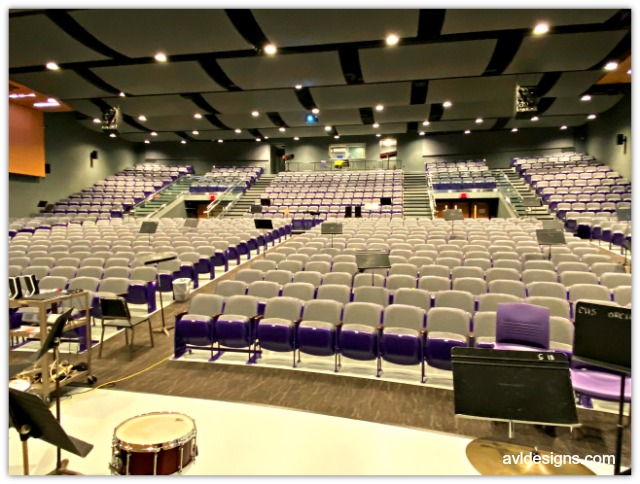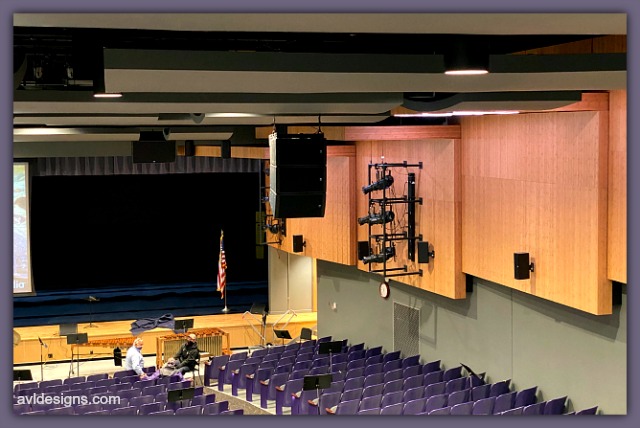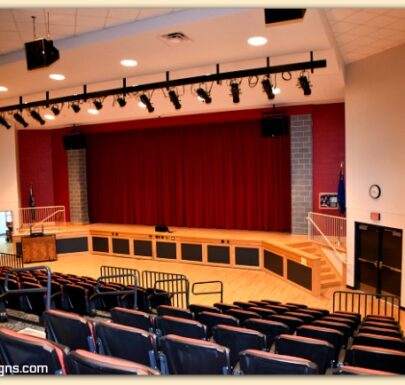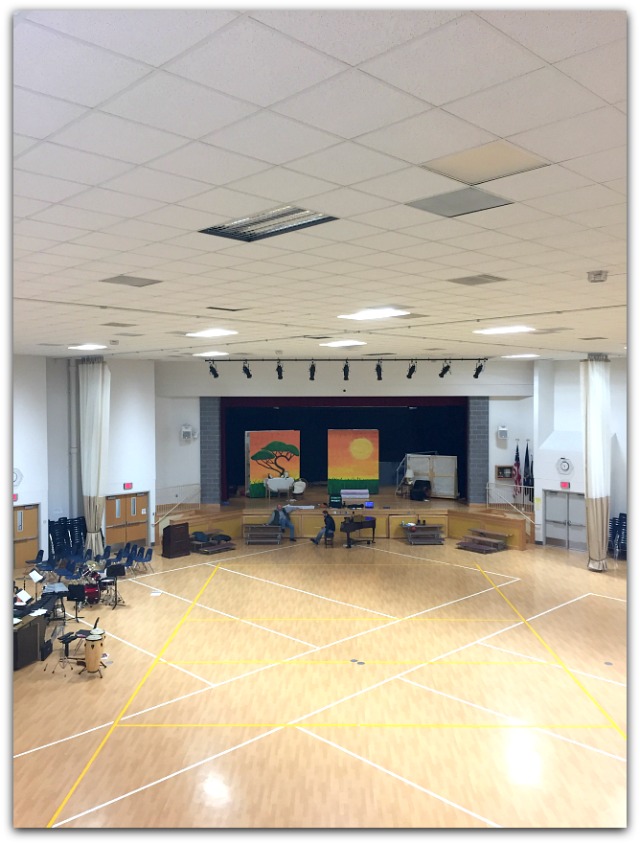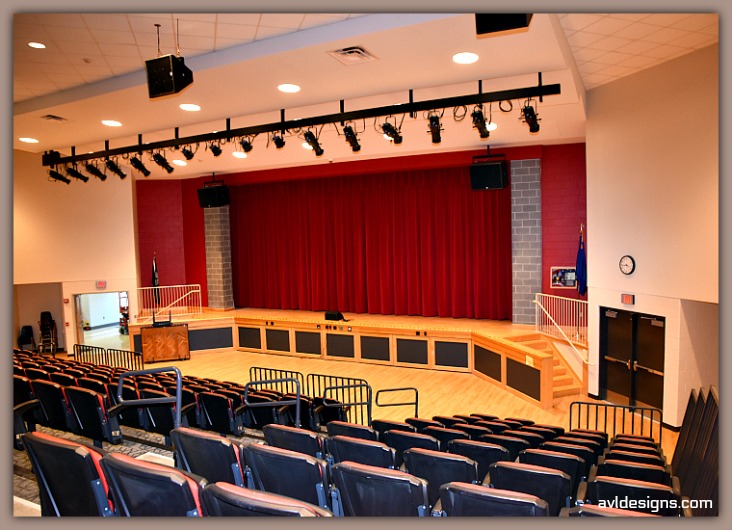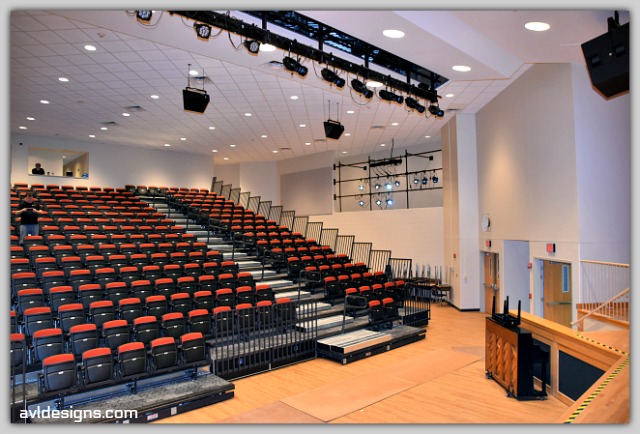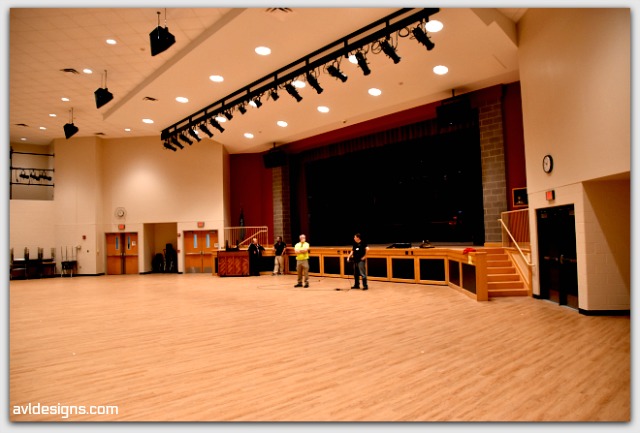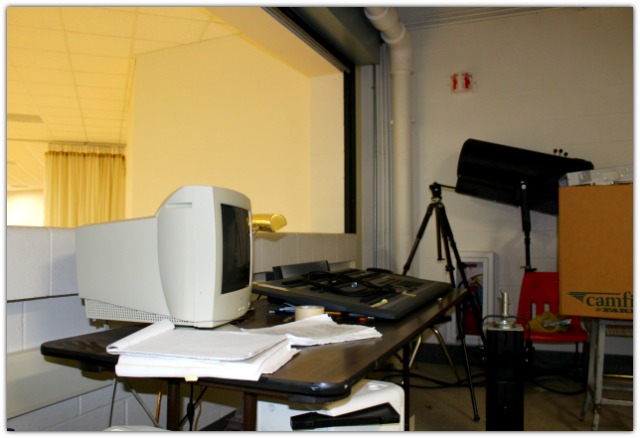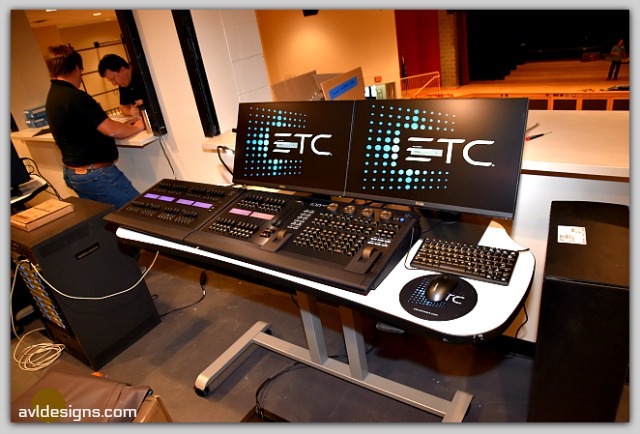Belfast High School in Belfast, New York has an active theater program. Even so, their performances have been taking place in a gymnasium with a stage that was minimally outfitted. So, with much help from AVL Designs Inc., the school undertook a major renovation project refurbishing the gym to accommodate top-notch theatrical performances .
Take a look at this “before” picture in contrast with what it looks like now, after the renovations!
You almost wouldn’t recognize the place!
BEFORE: Belfast High School Gym / Auditorium
AFTER: Belfast High School Gym / Auditorium
Originally, there was no fixed seating, insufficient lighting, limited access to FOH [front-of-house] lighting and minimal audio [though they did have about 30+ wireless systems.]
Actually, to their tribute, Belfast had been working diligently to do a good job with the audio on their shows but the system and room acoustics were fighting against them.
When it came to theatrical lighting, shows were highly challenging to produce. The school had one dead hung pipe and minimal onstage fixtures. They had absolutely no focusable fixtures, only one border light and some fluorescent strips.
SEATS
Above all, the biggest change needed was to add permanent seating capability and sight lines.
AVL Designs Inc.’s plan added a motorized raked seating system with padded chairs. This addition completely changed the way the room behaves acoustically, and makes it far more comfortable for the audience.
Other acoustical room upgrades have been completed, as well. Our design altered the ceiling profile to create an acoustical shell over the pit area for choral groups and to minimize side wall reflections.
LIGHTING
The addition of side lighting galleries brought a major improvement to the performance space. Motorized lighting was not an affordable option for the school so, the new lighting galleries give them the ability to quickly change lighting for specific events without having to bring in a man lift.
LED color changing fixtures make for rapid wash changes to the look of the stage. The system is designed around Electronic Theater Controls products using an Ion Xe® with dual touch screens. ColorSource™ is the primary lighting fixture used on the project using the combination of ellipsoidal and pars. The other lighting that was used was Strand SL bar 60 40s for stage light and general illumination.
AUDIO & AV
Other upgrades were to replace all front of house audio from the console to loudspeakers, monitors, processing Allen and Heath sq seven consoles were used as well as Sennheiser wireless systems and Danley S H series loudspeakers.
BEFORE: Belfast High School Booth
AFTER: Belfast High School Control Booth
The system sounds dramatically better than the original and is performing well for the owner. Video was upgraded as well, utilizing a high lumen output Epson Projector, new screen, new projector, Crestron control system, and other upgrades.
The school district is extremely pleased with their new space and, coming out of the COVID restrictions, is looking forward to using it for performances.
/
